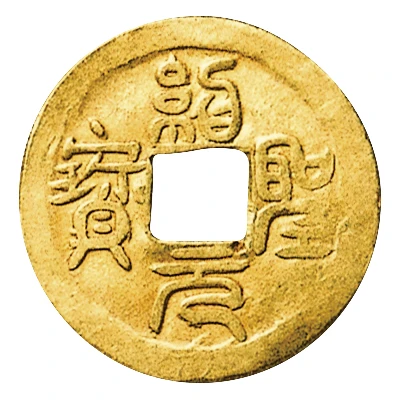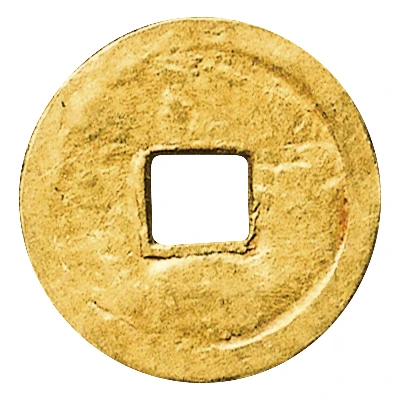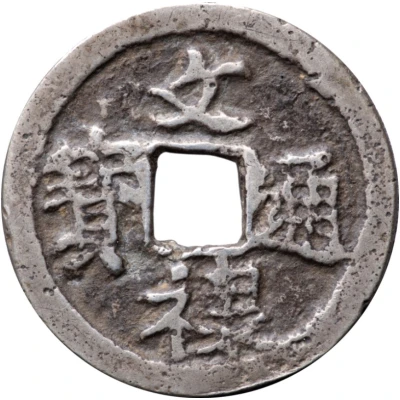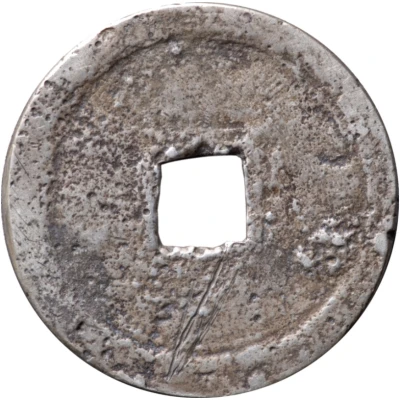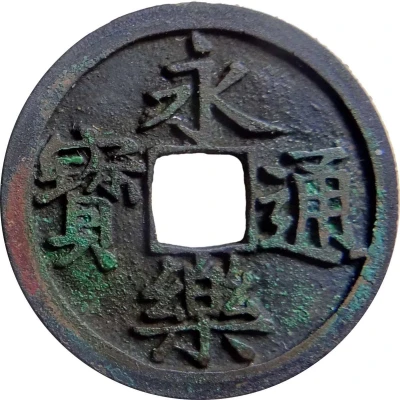
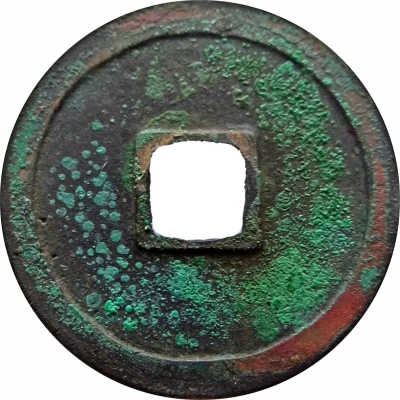

© gros (CC BY-NC-SA)
1 Mon "Eirakutsūhō" Copper alloy ND
| Copper | 3 g | 25 mm |
| Issuer | Japan |
|---|---|
| Emperor | Go-Yōzei (1586-1611) |
| Type | Standard circulation coin |
| Years | 1587-1608 |
| Value | 1 Mon |
| Currency | Mon (683-1953) |
| Composition | Copper |
| Weight | 3 g |
| Diameter | 25 mm |
| Thickness | 1 mm |
| Shape | Round with a square hole |
| Technique | Cast |
| Orientation | Medal alignment ↑↑ |
| Demonetized | 1608 |
| Updated | 2024-10-06 |
| Numista | N#221649 |
|---|---|
| Rarity index | 77% |
Reverse
Blank.
Edge
Plain
Comment
This coin is an imitation of the Chinese Yong Le Tong Bao and circulated alongside a large quantity of imported Chinese originals known as a toraisen. Japanese made coins are scarce today and distinguishing them and the imported coins is quite difficult. Dark copper alloys are said to be more frequent in Japanese coins and craftsmanship ranges from nearly Chinese quality to poorly made bitasen DHJ# 2.97-98 and 3.19.Ming dynasty inscription coins were officially prohibited by the Tokugawa shogunate in 1608 but bitasen continued to circulate until 1670 replaced by the more favoured Kan'eitsūhō.
Interesting fact
One interesting fact about the 1 Mon "Eirakutsūhō" coin is that it was issued during a time of great change in Japan. The coin was minted during the Sengoku period, a time of civil war and political upheaval that lasted from the mid-15th century to the late 16th century. Despite the turmoil, the coin remained a stable form of currency and was widely used throughout the country.
